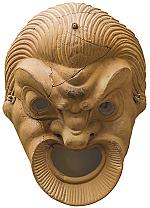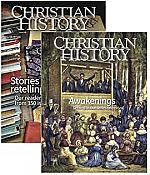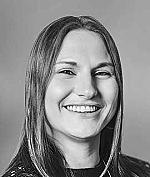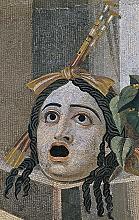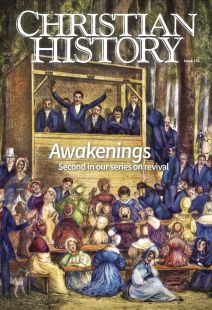More than revival
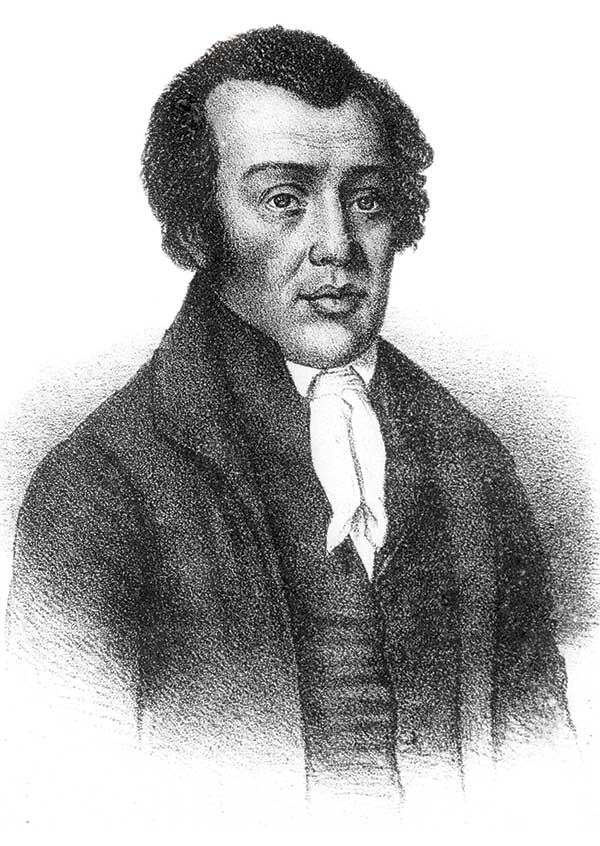
[Richard Allen—Public domain, Christian History Institute Archives]
When a new wave of spiritual change washed over America in the early 1800s, those living through it would not have thought to call it the “Second Great Awakening.” But they knew something special was happening. This “great revival of religion,” as they began to speak of it, was becoming an unstoppable force that would lead to the greatest era of Christian growth in American history. However, precisely defining what we know as the Second Great Awakening remains a difficult question for scholars. Unlike earlier bursts of revival, this awakening would prove to be less of an event and more of a process: a process of Christianizing America.
America's spiritual groundwork
Donald Mathews, the great historian of American religion, proposed it was better to conceive of the Second Great Awakening as an “organizing process” than a revival or series of revivals. Indeed major awakenings occurred in the early 1800s, punctuated by the Cane Ridge Revival in Kentucky in 1801 and Charles Finney’s Rochester, New York, assemblies in the early 1830s. Local and regional revivals swept across America, Canada, and the Caribbean from at least the 1780s to the 1850s. But more than just individual hearts and souls were revived in this movement. Through the awakening, clergy and laity built America’s Christian infrastructure.
Churches were the most essential part of that infrastructure. To be sure, spontaneous revivals occurred outside of church buildings. Exciting and newsworthy, these gatherings led to dramatic moments of spiritual transformation in the lives of thousands who converted. But churches were arguably more essential to the awakening process and obviously more central on a week-to-week basis to Christians’ spiritual lives and fellowship. Indeed the founding of churches usually preceded revival. And churches went on with their steady patterns of ministry, whether revival was happening or not.
The awakening also saw a blizzard of new Christian organizations, especially in the 1810s and 1820s, as fruit of what churches and the revivals outside of them were accomplishing. These included a host of parachurch agencies and missionary societies. Some of the best known were the American Bible Society (1816) and the American Board of Commissioners for Foreign Missions (1810), the most influential missionary agency of the nineteenth century. But the ABS and ABCFM were just the tip of the iceberg. There was seemingly no end to the missionary and moral reform endeavors that Americans (and the British) initiated in the early 1800s.
Much spiritual work continued between the decades of the First Great Awakening of the 1740s and the Second Great Awakening. In fact times of revival never truly ceased between the awakenings, with regional revivals happening even during the Revolutionary War in the 1770s and 1780s. But there is still good reason to see the two awakenings as separate events, not only because of chronology, but also because certain features made the Second Awakening different from the first.
Freedom and moving westward
One factor was American independence. The First Great Awakening was a fully integrated Anglo-American event. Leading revivalist George Whitefield (see pp. 18–20) was English, yet he was also the most important figure in the revivals in America, Scotland, and Wales. In contrast the Second Great Awakening was distinctively American. British and American revivals had fewer vital points of connection in the early 1800s—certainly no other itinerating evangelist profoundly linked the Anglo-American revivals the way that Whitefield had in the 1740s. The First Awakening’s preachers faced east across the Atlantic to Britain, but the Second Awakening’s evangelists faced west, out to the burgeoning frontier.
Two other obvious features marked the Second Great Awakening as American in spirit: disestablishment of the state churches and the leadership of new American denominations. Before the revolution most of the colonies had state churches that sought to regulate, and sometimes suppress, the most aggressive evangelical sects. New England states, particularly Connecticut and Massachusetts, maintained state churches long after the revolution. The First Amendment to the Constitution (1791) only prohibited a national established church, not state ones. But outside of New England, communities trended away from state-backed denominations. Direct tax support for churches was out; entrepreneurial religion was in. The American free market of religion benefited nimble evangelical denominations, especially the Methodists and the Baptists.
Methodists and Baptists in the Second Great Awakening carried out the most successful church-planting campaign in American history. The American population was growing at a breakneck pace, but these denominations kept up with and even outran that growth. The Wesleyan Methodists (freewill Arminians, as opposed to Whitefield’s Calvinist Methodists) were an almost exclusively British phenomenon during the First Awakening. But in 1784 John Wesley permitted American Methodists to separate from the Anglican Church. Led by tireless organizers, including Francis Asbury, the Methodists became the undisputed champions of evangelical growth between the revolution and the Civil War, by which time they were the largest Protestant denomination in the country (see CH #114).
The Baptist Church was not far behind and was even larger than the Methodist denomination in parts of the South and the British Caribbean. Only a tiny sect during the First Awakening, Baptists transformed into a behemoth by the early 1800s. As part of the great wave of new evangelical societies, they founded their first national organization, the Triennial Convention, in 1814.
Growth out of oppression
However, the twin tragedies of slavery and the violent expulsion of Native American peoples marred the population growth and evangelical expansion in the American interior. Evangelical faith made limited inroads among Native Americans. Baptists and Methodists made far more progress among the African American population, both enslaved and free. Early Black converts, evangelists, and pastors most effectively recruited African Americans into the evangelical fold.
For example, enslaved man David George (c. 1742–1810) experienced conversion, received believer’s baptism, and went on to pastor the Silver Bluff Baptist Church, founded around 1773 in western South Carolina. It was likely the first enduring Black-pastored church in America. George Liele (c. 1750–1828) was one of the Baptist ministers involved in David George’s conversion. Liele later became the key organizer of the Black Baptist churches of Jamaica, one of the most dynamic denominations in the Caribbean.
Likewise Richard Allen (1760–1831) converted under Methodist preaching as an enslaved man in Delaware. He went on to found the Mother Bethel African Methodist Episcopal Church in Philadelphia in 1794 and the African Methodist Episcopal denomination in 1816. By this point the Black church had become the most important social institution for people of African ancestry, not only in the United States but in the British Caribbean and in eastern Canada, where David George ministered among Loyalist (pro-British) Blacks after the American Revolution ended.
Both White and Black women played a major role in the Second Great Awakening. In a pattern dating back to the colonial era, women were almost always the majority in churches. The Second Awakening seems only to have enhanced that female predominance. Women, especially elite women in the North, discovered innumerable opportunities in the new Christian societies founded in the 1810s and 1820s. In Oneida County, New York, for example, women made up the majority of converts and new church members in a series of revivals that shook Utica and its environs from the 1810s to the 1830s.
These women mobilized the Oneida Female Missionary Society, which sponsored evangelistic work in relatively unchurched areas of New York. The society was not formally denominational, but like many such organizations, elite Presbyterian women dominated it. Many were married to professionals (merchants, bankers, lawyers) in Utica. Presbyterians, Congregationalists, and Episcopalians, the American colonial period’s leading denominations, numerically fell behind Methodists and Baptists during the Second Awakening. But they retained major cultural sway. Often the old “formalist” denominations provided much of the labor and finances behind the missionary and charitable societies.
The anxious bench
In the mid-1820s, the Oneida Female Missionary Society sponsored a young Presbyterian evangelist named Charles Finney (1792–1875). Its decision would be one of the most consequential of the Second Awakening, as Finney became the most successful and controversial revivalist in its late stages. Finney, a lawyer in upstate New York, experienced conversion in 1821 and soon cast aside law to preach instead. He enjoyed massive evangelistic successes across the urban North, with a knack for reaching the professional classes of the Erie Canal corridor in New York, especially in Rochester, which Finney visited for an extended campaign in 1830 and 1831.
Finney was notorious in his own day and remains so in some Christian quarters for his revivalist techniques and unorthodox theology. His “new measures” included practices such as the “anxious bench.” He set aside special seats at the front of an assembly where people in the throes of conversion could receive prayer and counsel. Relatively few left the anxious bench without having achieved assurance of salvation. Finney did not pioneer the new measures. In fact Methodists and others had used them for years. But Finney perfected the measures into a revivalist system that seemed virtually guaranteed to produce results in the form of professed conversions. Critics wondered whether Finney’s revival techniques were more about emotional manipulation than a genuine work of the Spirit.
Revivalists in Jonathan Edwards’s tradition emphasized that true awakenings were generated by the Holy Spirit, whom preachers could hardly summon at will. Finney conceded that God is behind true revival, of course. But he focused far more on a pastor’s choice to foment revival and a penitent’s choice to receive God’s forgiveness than anyone had before in the evangelical tradition. Those in the Calvinist movement struggled with a classic dilemma between people’s responsibility to repent and their inability to do so because of original sin. Finney rejected the notion that people could not choose repentance. He simply assumed that they could and preached accordingly. The only reason they might not convert was their own disobedience.
By 1831 Finney was even proclaiming that sinners are “bound to change their own hearts.” God had left the choice up to them. Did they want a new heart or not? They needed no gracious intervention to change their disposition toward God. Edwardsian preachers warned that this was theologically dangerous, human-centered territory. But by the time of Finney’s popular Lectures on Revivals of Religion (1835), he had established a model that would profoundly influence American revivalism for the next century and a half.
We can hardly delimit the Second Awakening with a tidy beginning and end, but it may make sense to view it as lasting from the 1801 Cane Ridge revival to Finney’s triumphs at Rochester in 1831. In between, innumerable revivals cropped up across North America and the Caribbean. More quietly, countless churches were planted across the American frontier.
In towns from Detroit to Nashville to Tallahassee, churches formed the social and spiritual infrastructure of the growing American interior. Parachurch organizations made Bibles, Sunday schools, and gospel tracts ubiquitous in both those settlements and in the older urban centers of the East Coast. Missionaries took the gospel to peoples from India to the Middle East, and to the Indigenous peoples of the American frontier. Revivals were central to the Second Great Awakening, of course, but the awakening was a far more complex phenomenon. It transformed the nation’s religion, leaving America far more Christian, churchgoing, and specifically evangelical than it had been before 1801. CH
By Thomas S. Kidd
[Christian History originally published this article in Christian History Issue #151 in 2024]
Thomas S. Kidd is Yeats Chair of Baptist Studies at Midwestern Baptist Theological Seminary.Next articles
Letters to the editor: Christianity and theater
Readers respond to Christian History
Readers and the editorsEditor's note: Christianity and theater
My relationship with the theater has been ambivalent.
Kaylena RadcliffThe spectacle and the spiritual
How the early church interacted with Roman and Greek theater
David L. EastmanSupport us
Christian History Institute (CHI) is a non-profit Pennsylvania corporation founded in 1982. Your donations support the continuation of this ministry
Donate



